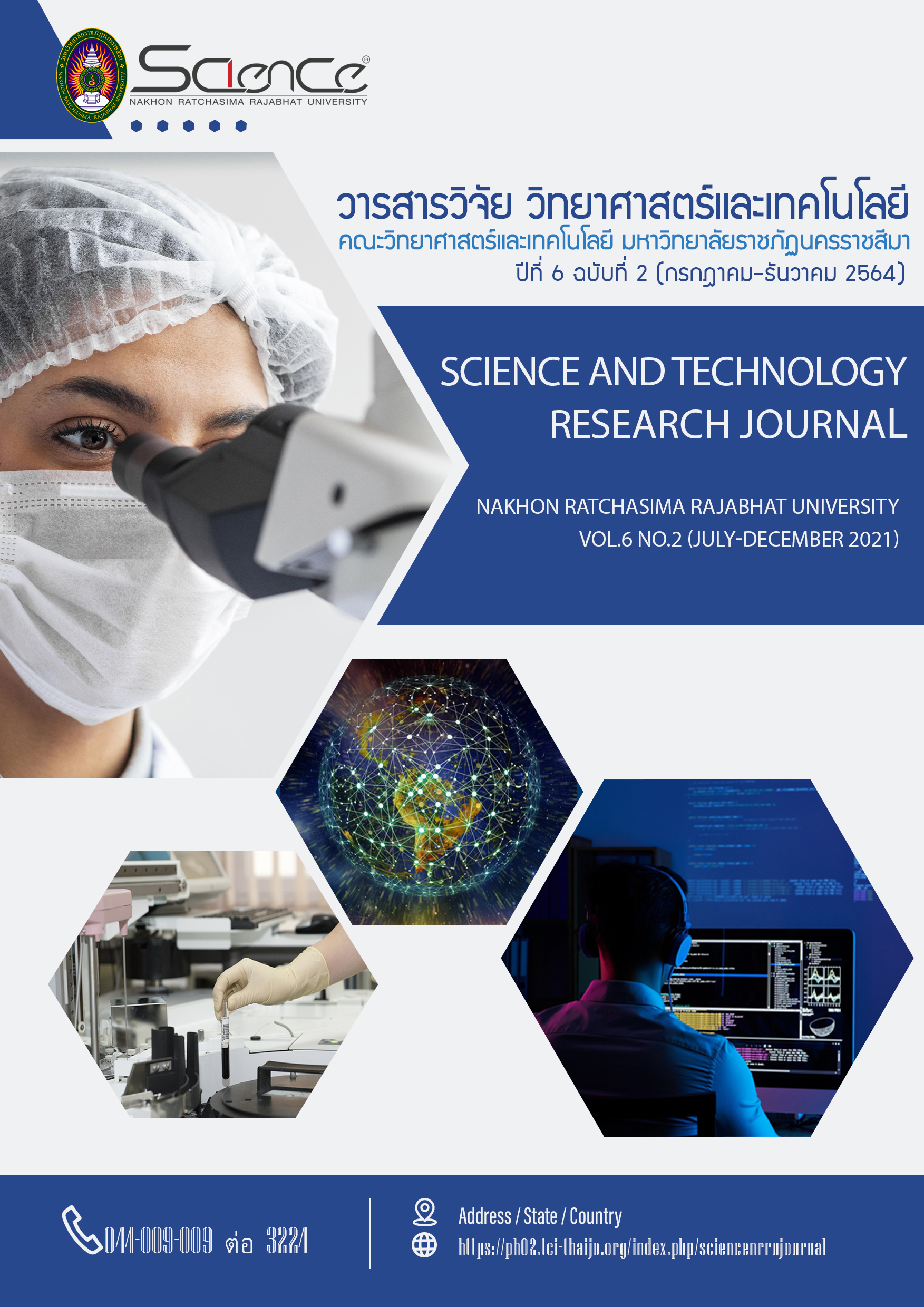การประเมินมูลค่าความเสี่ยงในการลงทุนในทองคำในสถานการณ์การแพร่ระบาด COVID19 โดยใช้แบบจำลอง ARIMA-GARCH
คำสำคัญ:
มูลค่าความเสี่ยง, ทองคำ, COVID19, ARIMA-GARCHบทคัดย่อ
การลงทุนในสถาณการณ์การแพร่ระบาด COVID19 นักลงทุนต้องมีเครื่องมือในการป้องกันความเสี่ยง ซึ่งเครื่องมือที่สำคัญอย่างหนึ่งคือ การวัดมูลค่าความเสี่ยง (Value at Risk : VaR) ในการวิจัยครั้งนี้ผู้วิจัยเปรียบเทียบมูลค่าความเสี่ยง VaR โดยการศึกษาครั้งนี้ได้สร้างตัวแบบมูลค่าความเสี่ยงโดยใช้ข้อมูลของราคาทองคำในอดีต โดยใช้แบบจำลอง ARIMA-GARCH เปรียบเทียบกับตัวแบบ GARCH EGARCH GJRGARCH ในการหาตัวแบบประมาณค่า VaR เวลาที่ใช้คือ ตั้งแต่เดือนมกราคม พ.ศ. 2560 ถึงเดือนสิงหาคม พ.ศ. 2565 ในการสร้างตัวแบบมูลค่าความเสี่ยงและทำการทดสอบย้อนกลับใช้ช่วงเวลาตั้งแต่ เดือนมกราคม พ.ศ. 2563 ถึงเดือนสิงหาคม พ.ศ. 2565 ซึ่งเป็นระยะเวลาที่เกิดการแพร่ระบาดในประเทศไทย พบว่าตัวแบบ ARIMA(0,0,0) with zero mean มีความเหมาะสมในการพยากรณ์ผลตอบแทนราคาทองคำ และ ตัวแบบความผันผวนที่เหมาะสม ได้ทำการพิจารณาตัวแบบดังต่อไปนี้ GARCH (1,1) EGARCH (1,1) และ GJR-GARCH (1,1) ซึ่งแต่ละตัวแบบการแจกแจงที (t) ซึ่งคำนวณหามูลค่าความเสี่ยงและทำการทดสอบย้อนกลับพบว่า ตัวแบบ ARIMA-EGARCH-t GARCH ซึ่งเป็นเครื่องมือคาดการณ์ที่มีประสิทธิภาพในการการทดสอบย้อนกลับกับผลตอบแทนของราคาทองคำในขณะที่เกิดการแพร่ระบาด COVID19
เอกสารอ้างอิง
Alexander, C , & Sheedy, E (2008). Developing a stress testing framework based on market risk models. Journal of Banking & Finance, 32, 2220-2236.
Angelidis T., Benos A. and Degiannakis S. (December 2003). The Use of GARCH Models in VaR Estimation.
Bank for International Settlements, (1996b). Supervisory framework for the use of backtesting in conjunction with the internal models approach to market risk capital requirements.
Bollerslev, Tim. (1986). Generalized Autoregressive Conditional Heteroscedasticity. Journal of Econometrics, 31, 307-327.
Enders, Walter. (1995). Applied Econometric Time Series. New York : John Willey & Sons.
Ghalanos A. (August 2017). Introduction to the rugarch package (Version 1.3-8).
Glosten, L.R., Jagannathan, R., & Runkle, D.E. (1992). On the Relation Between the Expected Value and Volatility of the Nominal Excess Returns on Stocks. Journal of Finance, 46, 1779-1801.
Jorion, Philippe. (1996). Value at Risk : The New Benchmark for Controlling Market Risk. Irwin Professional.
Montgomery D., Jennings C. and Kulahci M. (2015). Introduction to Time Series Analysis and Forecasting (Second Edition). New Jersey: Wiley.
Nelson, D.B. (1991). Conditional Heteroskedasticity in Asset Returns: A New Approach. Econometrica, 59(2), 347-370.
Saeed, A and Parastoo, M. (2012). Measuring Exchange Rate Fluctuation RisK Using the Value- at-Risk. Journal of Applied Finance & Banking, vol.2 no.3,65-79 (online)
ทรงศิริ แต้สมบัติ. (2549). การพยากรณ์เชิงปริมาณ. กรุงเทพฯ : มหาวิทยาลัยเกษตรศาสตร์.
สุพรรณี อึ้งปัญสัตวงศ์. (2541). เทคนิคการพยากรณ์เชิงสถิติ. ขอนแก่น : หน่วยผลิตเอกสาร คณะวิทยาศาสตร์ มหาวิทยาลัยขอนแก่น.
เสาวนีย์ ฉัตรไพศาลสุข. (2543). การวัดความเสี่ยงของการขาดทุนจากการลงทุนหลักทรัพย์ภายในตลาดหลักทรัพย์แห่งประเทศไทย โดยใช้เทคนิค Value at Risk. (การค้นคว้าอิสระ). กรุงเทพฯ : มหาวิทยาลัยธรรมศาสตร์.
อัญญา ขันธวิทย์. (2547). การวิเคราะห์ความเสี่ยงจากการลงทุนในหลักทรัพย์. กรุงเทพฯ :ตลาดหลักทรัพย์แห่งประเทศไทย.
ดาวน์โหลด
เผยแพร่แล้ว
รูปแบบการอ้างอิง
ฉบับ
ประเภทบทความ
สัญญาอนุญาต
เนื้อหาและข้อมูลในบทความที่ลงตีพิมพ์ในวารสารวิจัย วิทยาศาสตร์และเทคโนโลยี มหาวิทยาลัยราชภัฏนครราชสีมา ถือเป็นข้อคิดเห็นและความรับผิดชอบของผู้เขียนบทความโดยตรงซึ่งกองบรรณาธิการวารสาร ไม่จำเป็นต้องเห็นด้วย หรือร่วมรับผิดชอบใด ๆ
บทความ ข้อมูล เนื้อหา รูปภาพ ฯลฯ ที่ได้รับการตีพิมพ์ในวารสารวิจัย วิทยาศาสตร์และเทคโนโลยี มหาวิทยาลัยราชภัฏนครราชสีมา ถือเป็นลิขสิทธิ์ของวารสารวิจัย วิทยาศาสตร์และเทคโนโลยี มหาวิทยาลัยราชภัฏนครราชสีมา หากบุคคลหรือหน่วยงานใดต้องการนำทั้งหมดหรือส่วนหนึ่งส่วนใดไปเผยแพร่ต่อหรือเพื่อกระทำการใด ๆ จะต้องได้รับอนุญาตเป็นลายลักอักษรจากวารสารวิจัย วิทยาศาสตร์และเทคโนโลยี มหาวิทยาลัยราชภัฏนครราชสีมา ก่อนเท่านั้น



